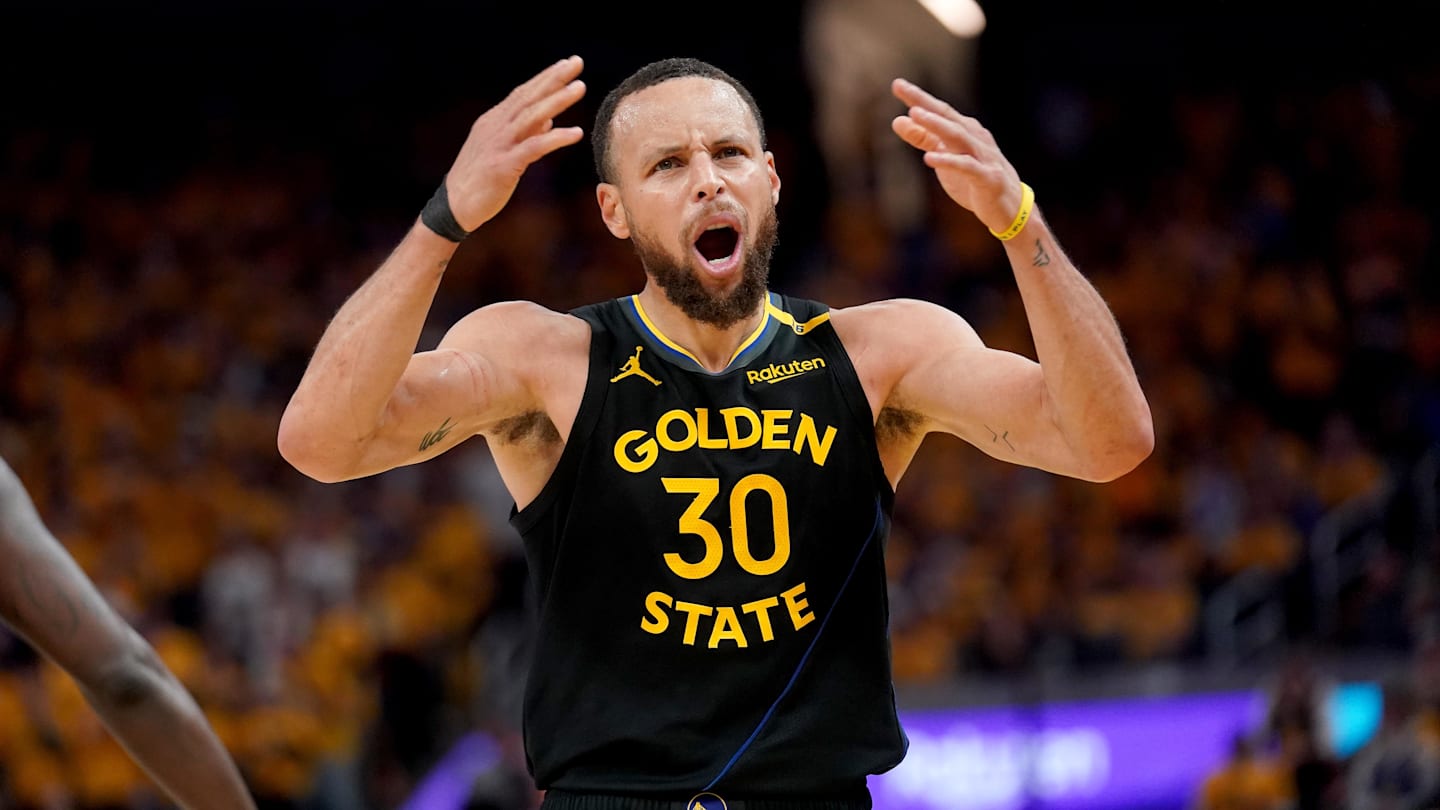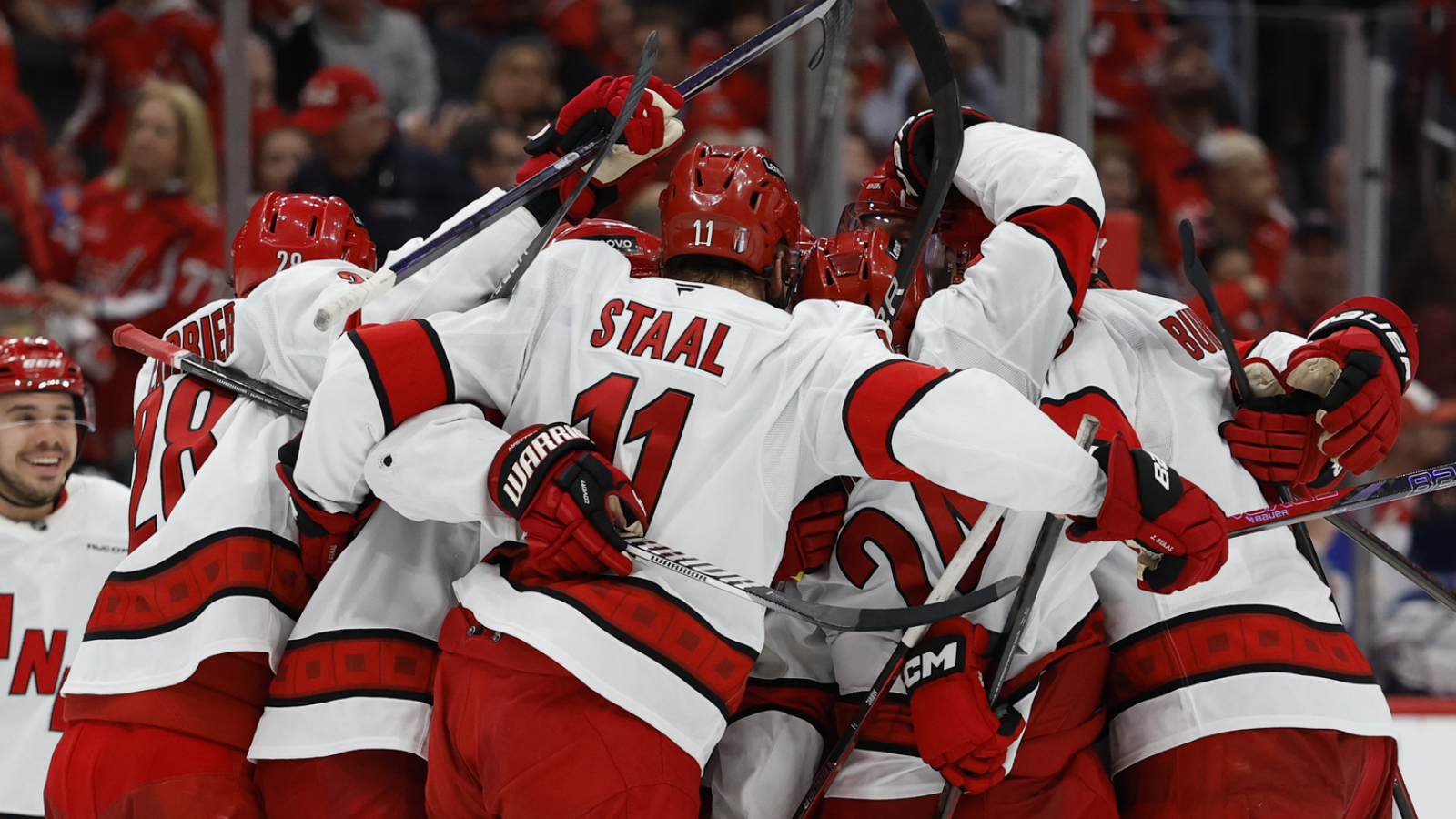
Disaster struck the Golden State Warriors in Game 1 of their Western Conference semifinals series against the Minnesota Timberwolves. In the second quarter, after a slow start from both sides, Curry came up lame and limped to the locker room; he was quickly declared out for the game, which is never a good sign. Once the Dubs wrapped up a huge 99–88 win to take a 1–0 series lead despite Curry’s absence, coach Steve Kerr revealed the superstar point guard suffered a hamstring strain and his status going forward was unknown.
Wednesday brought the news the Warriors were dreading: Their franchise player was going to miss multiple games. The team announced Curry suffered a strained hamstring and would be sidelined at least a week before being reevaluated. Based on the NBA playoff schedule, that means Curry will miss at least Game 2, Game 3 and Game 4, with a possible Game 5 scheduled for May 14. So if he heals like Wolverine, Curry will miss “only” three games. If he heals more like a normal NBA player, it seems very unlikely he’d play in an if-necessary Game 5 and the next realistic chance he has at suiting up will come in another if-necessary Game 6 on May 17.
That is, of course, assuming Game 6 actually happens. And that will prove mighty difficult against a Timberwolves team who will smell blood against a Curry-less roster.
Their Game 1 win should hope and caution in equal measure. Earning the victory even with Curry out is huge for the roster’s morale and gives the team an ever-so-slight cushion in surviving without him. However, it will be difficult to replicate that win in particular. The Warriors shot a remarkable 42.5% from three, including a 4-of-10 showing from Draymond Green and his unsightly but functional jumper. The Timberwolves, conversely, hit a horrendous 17.2% of their three-point tries and overall couldn’t throw a rock in the ocean, ending the game with a 39.5% shooting mark from the floor. There are strategies to take away from the game that can be applied to future matchups, but the Warriors can’t rely on Minnesota missing that many jumpers every night, and their own subpar offensive output (despite electric shooting numbers from beyond the arc) is cause for concern on its own.
The Warriors’ defense is still very good, to be clear. As long as Green is out there directing traffic from the backline with Butler spearheading the game plan, Golden State is going to make life hard for its opponents. But, obviously, Curry’s absence will be felt on the offensive end the most. How can the Warriors survive their leader?
He is not a heliocentric player in the same way Luka Doncic or Nikola Jokic are, but make no mistake: Curry is the Warriors’ offense. The whole system is engineered to take advantage of the defensive soft spots that appear when multiple defenders have to zero in on Curry as he rockets around screens off the ball or probes the defense while on it. His gravity is the start and end point of Kerr’s entire strategy, the “keep the ball hopping and find the best shot” offense that revolutionized the NBA. It doesn’t work without Curry on the court to force the Anthony Edwardses and Rudy Goberts of the world out of position and open up gaps Golden State can take advantage of. Buddy Hield is a dangerous enough shooter that he can somewhat replicate the effect, but Curry stands alone in how significantly he warps the floor just based on where he’s standing at any given moment.
So, it’s best to just toss that entire idea out the window and run the offense through Butler instead. It’s part of the reason why Golden State gave up multiple rotation players to land his talents—Butler can find his own shots and open up opportunities for his teammates in the process. We saw a glimpse of that in Game 1, where the forward finished with eight assists, and his time with the Miami Heat is littered with instances of Butler elevating a less-talented roster over a superior opponent through sheer force of will. The Dubs must unleash that version of Butler.
The question then becomes how best to do so. It’s been a bit of a struggle for the former Heat star to find his rhythm in Golden State; he finished the season averaging 17.9 points per game while taking only 11.1 shots per contest after he joined the Warriors on Feb. 8. Butler looked a touch more comfortable in the system in the first round against the Houston Rockets, but theirs was not an easy defense to score against and Butler managed only 18.3 points per game throughout the series.
He also hasn’t gotten to his spots in his preferred methods. Butler has long been one of the league’s better isolation players, yet this postseason he’s scored only 18 points on 22 isolation attempts. That comes out to 0.82 points per possession, which is tied for 28th among qualifying players this playoffs. To compare, he scored 1.07 points per possession on isos in his last full year in Miami. This isn’t to say the Warriors need to start immediately getting Butler one-on-one against the Wolves’ cadre of excellent defenders, but instead shows how much more the forward can give to this offense—that is, if he can find a flow.
Butler has spent his short time in the Bay Area learning how to play off Curry. Now he needs to revert back to what he knows best. If the Warriors can put him in a position to succeed and unlock the dormant scorer who terrorized the Eastern Conference for the last five years, the rest of the offense should follow.
Even running the offense through Butler won’t solve all the team’s woes. He is quite capable of putting up big scoring numbers but always has to earn it. With Curry goes any semblance of effortless points for the rest of the team. They’ll need to find easy opportunities somewhere. And that somewhere is transition.
Getting out and running is always the best way for a team to make up for a lack of firepower, which is why opposing defenses are always extra incentivized to prevent such opportunities come postseason play. The Wolves will certainly be doing what they can to prevent the Warriors from scoring easy points in the open floor and, as one of the league’s top defenses, are quite capable of stifling the transition game.
This is where Golden State’s rock fight with Houston in the first round will come in handy. Through eight postseason games the Warriors are second in total transition points, trailing the breakneck Indiana Pacers by exactly one point, and tie for first with those same Pacers by recording 1.30 points per possession in transition opportunities. Minnesota has allowed the fourth-fewest points in transition among all playoff teams thus far, so it won’t be easy, but that’s where Golden State can find an added bump to the offense (which Kerr and his staff were already planning to do in this second-round series, it would seem). There were numerous instances in Game 1 where the Warriors clearly wanted to push in transition as the Timberwolves tried to crash the offensive glass in order to capitalize on their size advantage.
It’s impressive they’ve managed to adjust in that manner. Golden State was average while getting out and running during the regular season, ranking 17th in transition possessions and 16th in transition points per game. It must continue to be an area of emphasis or the Warriors will struggle to get points on the board against this quality defense.
This will perhaps be the true determining factor in this series. The main players are known quantities. Butler has more to give offensively, but the NBA world knows what his ceiling looks like. Hield had a great outing in Game 1 to follow up an amazing Game 7 performance, yet consistency has always been his fatal flaw; it’s dangerous to expect the sharpshooter to put up 20-plus points every night. Gary Payton II will always be a pest defensively and is good for a timely shot here and there. Not much more than that, though.
What the Warriors need, more than anything, is for one of their lesser-proven talents to have a great stretch. Whether it’s Brandin Podziemski, Moses Moody or even the oft-benched Jonathan Kuminga. Heck, even a big Quinten Post or Pat Spencer game would be welcome. The known quantities of this series are unlikely to be enough. This was always the downside of trading the roster’s depth for Butler—a three-headed monster of Curry, Butler and Green only works if all three are on the court. Even with a few classic Butler playoff performances or one of Green’s unexpectedly great offensive nights, the Timberwolves are both talented and physical enough to overwhelm Golden State. Without the superstar that stirs the drink, the Warriors as we currently know them will have trouble keeping up.
To win games, to make do without Curry, Golden State has to find an unexpected contributor. Podziemski seems the most likely candidate. The 22-year-old guard put up some stellar numbers near the end of the regular season and then played so poorly to kick off this postseason (including a 1-of-7 shooting performance in Game 1 against Minnesota) you almost have to expect he’ll play better going forward. But maybe Curry’s absence will allow enough room for Kuminga to spread his wings. Or Moody. It just has to be someone.
The Dubs don’t need those players to be amazing. The goal is to tread water until Curry returns. They need to do more than occupy space on the court, though, which has largely been the case so far this postseason. It just hasn’t mattered because Curry is that good. The pressure cooker of the playoffs combined with sudden opportunity can lead to amazing outcomes. Around one year ago at this time, Andrew Nembhard was giving the business to the eventual champion Boston Celtics because Tyrese Haliburton got hurt and his team needed someone else to step up. He did and gave Boston its toughest challenge of the whole postseason.
The Warriors need a similar inspired performance from somebody—or Curry’s absence could prove fatal to their season.
